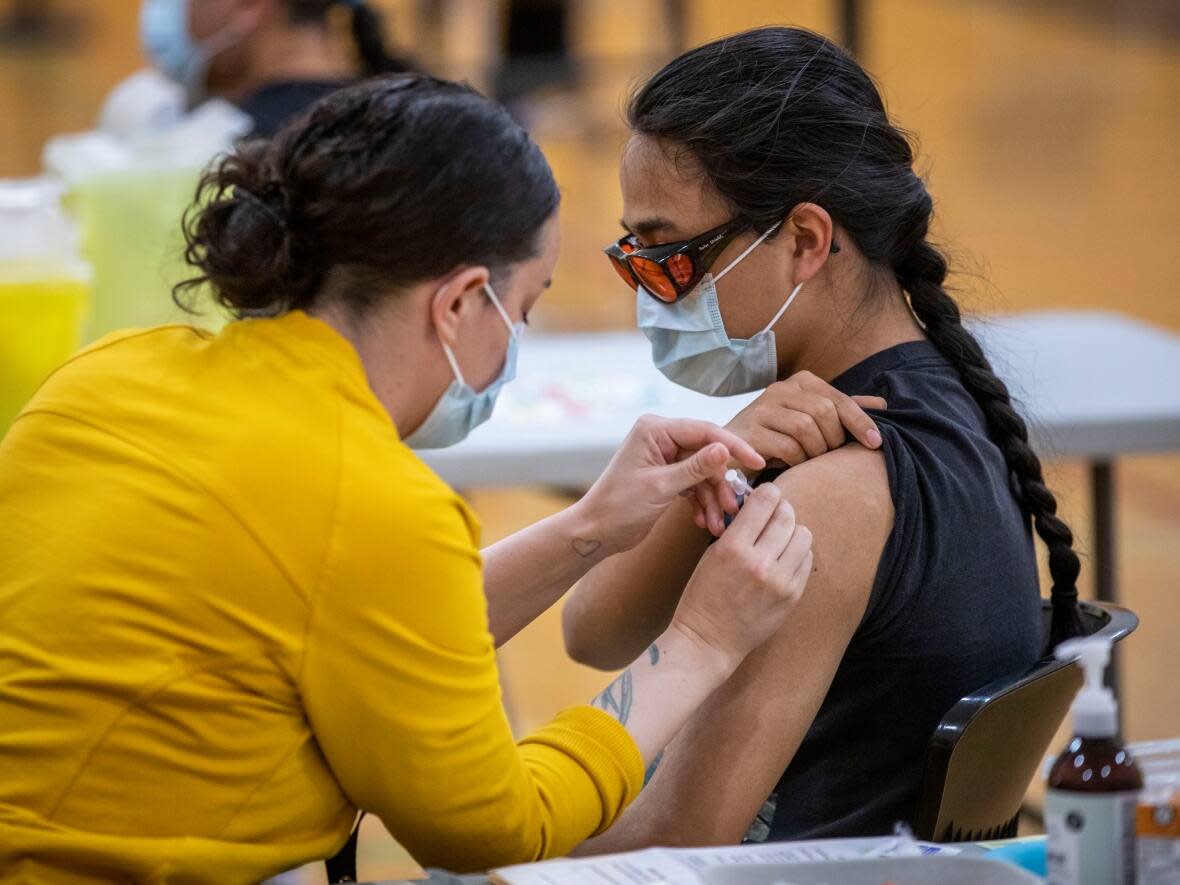Northern Indigenous communities in Sask. have twice as many active COVID-19 cases, data shows

First Nation communities in the northern part of Saskatchewan are fighting an uphill battle against COVID-19 that has led to significantly higher case and death counts than the rest of the province.
There are about 364 active cases of COVID-19 per 100,000 people in all of Saskatchewan — often referred to as the rate of active cases — as of Saturday. These include the active cases in First Nation communities located in northern Saskatchewan.
In comparison, the rate of active cases of COVID-19 per 100,000 in northern First Nation communities alone is about 716 as of Saturday — nearly twice as high as the rate for the province as a whole.
To find this information, CBC used federal data that showed the population of Indigenous people as registered as status Indians who lived on their reserve, another reserve or on Crown land within the 33 communities located in the Northern Inter-Tribal Health Authority.
This method does not include those who live in the community and aren't registered, or may have not been unregistered after death, but it is the most accurate number available.
"We do know that the burden of illness appears to be higher in northern communities compared to any other part of the province," explained Dr. Nnamdi Ndubuka, medical health officer for the health authority, in mid-September.
COVID-19 in Saskatchewan, per 100,000 people
Issues of overcrowding, access to health care and lack of isolation spaces are "obvious" explanations for the effect COVID-19 has had on northern communities, he said.
"The difference in burden of disease has always been there, it's not new ... the pandemic just really magnified those impacts."
The rate of total cases in those communities, when adjusted for population, is nearly triple the number of total cases in the rest of the province. There have been 6,575 cases in a population of just less than 38,000 — meaning about 17,380 per 100,000 people.
The rate of total COVID-19 cases in the entire province is a bit less than 6,300 per 100,000 people.
While current hospitalizations are only marginally higher for people in communities located in the northern health authority, the rate of deaths is 2.6 times higher — a rate of 114 per 100,000 in northern communities compared with 43 per 100,000 in the entire province.
Like much of the province, new cases are most often unvaccinated people, as are hospitalizations.
On Saturday, 11 of the 12 people hospitalized in the northern First Nation communities had not received any dose of the vaccine.
'We see the vaccines [as] our only way out'
Stanley Mission, Sask., accounts for 43 active COVID-19 cases in the north as of Friday. They're a part of the health authority's far northeast region, which accounts for more than half of the active cases.
"It's a respiratory illness and if you have 10 people in one [three-bedroom] house sharing … one washroom it makes it harder to contain COVID-19," said Chief Tammy Cook-Searson of the Lac La Ronge Indian Band, which is composed of six communities including Stanley Mission.
She had previously called on the province to renew the self-isolation mandate, which they did a short time later. At the time, there were 120 active cases in the community.
Cook-Searson believes that the mandate helped bring their numbers down and said health-care staff have been working tirelessly — including through holidays — to try and combat the pandemic.
"We see the vaccines [as] our only way out of the pandemic," Cook-Searson said.
Northern communities have worked to incentivize vaccination through compensation and draws for prizes.
COVID-19 in First Nation communities across Canada
As of Friday, First Nation communities in the country have a total active case rate of 361 per 100,000 people — about four times the national rate of 92 per 100,000 people, according to the government of Canada.
The total case rate since the beginning of the pandemic is nearly twice as high: 8,499 per 100,000 on First Nation reserves compared to the 4,412 per 100,000 across Canada.
There have also been about 86 deaths per 100,000 people in First Nation communities compared with a rate of 75 per 100,000 people across Canada.

 Yahoo Movies
Yahoo Movies 
